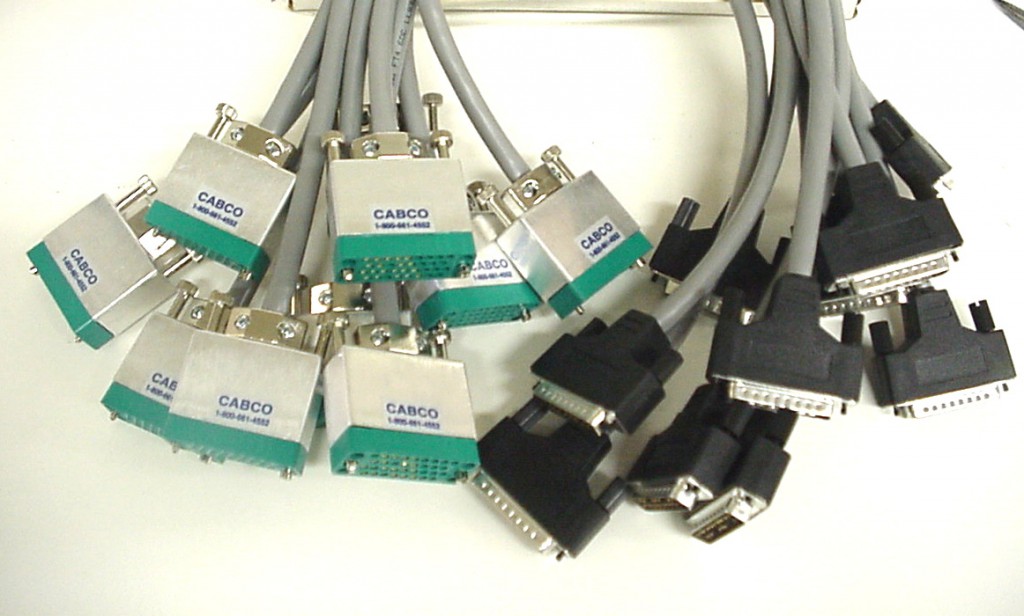This is part of my on going thing about cisco networking.
I guess I can go on about various serial port standards from the good old fashioned RS-232, and V.35. Â Not to mention things like T1/E1/J1’s with HDLC, Frame relay, Ethernet, TokenRing, ATM….
And of course various virtual technologies like VPN’s, and tunnelling.
So for now, my placeholder will just contain one little gem of wisdom about V35 cables.
When you are connecting V35’s remember to slowly screw them in, and try to screw both screws in at the same time, or a little bit on each side. Â If you try to screw one side in all at once, you could break the screw, or worse it’ll help you strip the other screw trying to go in as it’ll be all lopsided.
Frame Relay
Frame relay is a great ‘slow’ networking cloud solution from back in the day. Â For people who were going to deploy global WAN solutions that were going to be sub T1/E1 speeds, frame relay was the way to go. Â You would simply get a T1 port installed in each of the sites, then the provider will then create PVC’s from each of the sites. Â What is great is you can (theoretically) quickly provision new sites, and change service classes as needed. Â Sadly for frame relay it is hampered by the port speed being only a T1/E1, limiting it to 1.5MB/2MB. Â But heck it is from the mid 1980’s, so what do you expect?
Configuration
On the Dynamips / Dynagen simulation configuring frame relay is pretty simple. Â The Frame Relay switch is already configured in my example here:
[FRSW F1]]
1:102 = 2:201
1:103 = 3:301
Which just specifies that on my WAN router pvc 102 goes to pvc 201 in New York, and pvc 103 goes to pvc 301 in Hong Kong. For simplicity sakes, all the physical serial ports are S1/0. With this in mind, let us first configure the physical interfaces in all the routers.
So the first step is to set the encapsulation on the serial interface to frame-relay. Â Then turn the interface on.
nycrtr1#config t
Enter configuration commands, one per line. End with CNTL/Z.
nycrtr1(config)#int s1/0
nycrtr1(config-if)#encapsulation frame-relay
nycrtr1(config-if)#no shut
nycrtr1(config-if)#^Z
nycrtr1#
Now we wait for the interface to transition.
nycrtr1#
00:18:43: %LINK-3-UPDOWN: Interface Serial1/0, changed state to up
00:18:54: %LINEPROTO-5-UPDOWN: Line protocol on Interface Serial1/0, changed state to up
nycrtr1#
Now we can check to see if the router see’s the PVC going to the core wan router.
nycrtr1#sho frame-relay pvc
PVC Statistics for interface Serial1/0 (Frame Relay DTE)
Active Inactive Deleted Static
Local 0 0 0 0
Switched 0 0 0 0
Unused 1 0 0 0
DLCI = 201, DLCI USAGE = UNUSED, PVC STATUS = ACTIVE, INTERFACE = Serial1/0
input pkts 0 output pkts 0 in bytes 0
out bytes 0 dropped pkts 0 in pkts dropped 0
out pkts dropped 0 out bytes dropped 0
in FECN pkts 0 in BECN pkts 0 out FECN pkts 0
out BECN pkts 0 in DE pkts 0 out DE pkts 0
out bcast pkts 0 out bcast bytes 0
switched pkts 0
Detailed packet drop counters:
no out intf 0 out intf down 0 no out PVC 0
in PVC down 0 out PVC down 0 pkt too big 0
shaping Q full 0 pkt above DE 0 policing drop 0
pvc create time 00:02:12, last time pvc status changed 00:02:02
Looks good!
Now lets configure the DLC on the frame relay sub interface
nycrtr1#config t
Enter configuration commands, one per line. End with CNTL/Z.
nycrtr1(config)#int s1/0.201 point-to-point
nycrtr1(config-subif)#frame-relay interface-dlci 201
nycrtr1(config-subif)#ip address 135.0.0.6 255.255.255.252
nycrtr1(config-subif)#^Z
nycrtr1#
Now for the ultimate test once the other side is configured.
corewan1#sho run int s1/0.102
Building configuration…
Current configuration : 140 bytes
!
interface Serial1/0.102 point-to-point
description NewYork
ip address 135.0.0.5 255.255.255.252
frame-relay interface-dlci 102
end
corewan1#ping 135.0.0.6
Type escape sequence to abort.
Sending 5, 100-byte ICMP Echos to 135.0.0.6, timeout is 2 seconds:
!!!!!
Success rate is 100 percent (5/5), round-trip min/avg/max = 20/20/24 ms
corewan1#
And there we go, our Frame relay is up!


Make sure to talk about how Great Token Ring and Bus Topologies were.
Yeah I know.. or what happens when someone loses the token.. everyone out of the ring!